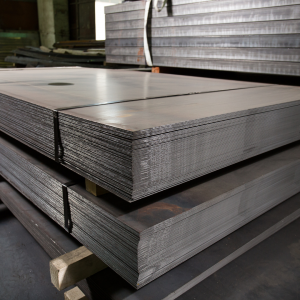Stainless Steel Qualities
- Durability: Stainless steel grades are designed to last, offering long-term performance and reliability even in the toughest environments.
- Corrosion Resistance: Stainless steel is highly resistant to corrosion, which makes them ideal for industries like marine, construction, and food processing.
- High Strength: Stainless Steel with exceptional tensile and yield strength, ensuring that your structures and equipment are built to withstand heavy loads and stress.
- Versatility: Whether you need stainless steel for construction, manufacturing, or specialised engineering projects, the diverse selection of steel grades suits every requirement.
- Cost-Effective: Stainless steel is not only high-quality but also cost-effective, giving you the best value for your investment.
Types of Stainless Steel
Grade 303 Stainless Steel
Grade 303 is the most machinable material amongst the stainless steels. It is specifically designed for applications that involve extensive machining during production. The addition of sulphur and phosphorus improves its machinability and resistance to galling but slightly reduces its corrosion resistance compared to Grade 304.
Grade 304 Stainless Steel
Grade 304 is the most commonly used and versatile stainless steel grade, available in more forms, finishes, and applications than any other type. Its balanced structure allows for deep drawing without the need for intermediate annealing, making it ideal for forming complex shapes. It also provides excellent oxidation resistance, withstanding intermittent extreme temperatures.
Grade 316 Stainless Steel
Following Grade 304, Grade 316 is the second most widely used austenitic stainless steel. It maintains excellent toughness even at cryogenic temperatures. It offers superior corrosion resistance in a wide range of environments and atmospheric conditions.
Grade 410 Stainless Steel
Grade 410 is a fundamental stainless steel known for achieving high mechanical strength through heat treatment. It offers a well-balanced combination of toughness, ductility, and corrosion resistance, along with good scaling resistance up to 649°C. These properties make it ideal for applications that demand both strength and durability in challenging or high-temperature environments.
Stainless Steel Applications Across Industries
Construction and Infrastructure:
Structural steel products deliver exceptional strength and stability for critical infrastructure projects, from bridges and highways to high-rise buildings and industrial complexes.
Manufacturing:
Steel serves as a vital material in the production of machinery, tools, and equipment across diverse industries, including automotive, aerospace, and heavy manufacturing.
Energy Sector:
Steel provides corrosion-resistant and high-temperature which meets the demands of the energy industry, ideal for oil, gas, and renewable energy applications.
Agriculture and Mining:
Our wear-resistant steel grades are engineered for durability in demanding environments, making them perfect for agricultural and mining equipment that requires long-lasting performance and minimal maintenance.


